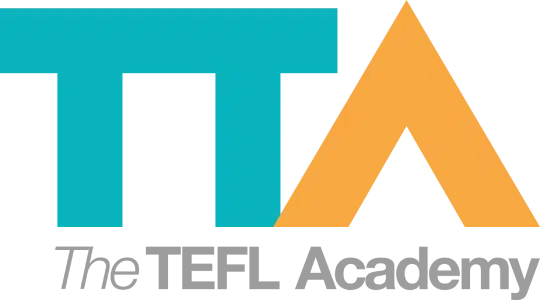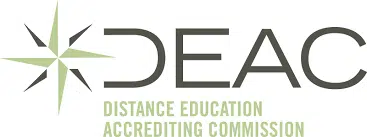How To Teach Functional Language
Join a global community of over 200,000 TEFL teachers working throughout the world! Enrol me!
When we first start teaching English as a Foreign Language, we plan lessons on grammar, vocabulary, reading, writing, listening, and speaking. What is often forgotten are functional language lessons. In fact, you might not even be aware of what functional language is. And if you don’t know what it is, it’s not surprising that you aren’t familiar with how to teach functional language. As you will see in a minute, functional language is an important part of a language and so it’s essential that you are able to plan an effective functional language lesson.
But first, some clarity.
What is functional language?
Functional language is language that we use to perform certain functions, such as giving advice, apologising, agreeing, or ordering food in a restaurant. We use functions such as these every day, no matter where you are and what language you speak. If you are living in an English-speaking country, every day you will need to be able to perform a number of different functions in English. Consequently, our students need functional language to be able to cope in an English-speaking environment.
They will certainly need a very general functional language if they are living in an English-speaking country but may also require a more specific functional language if they are using English to study or work as well. We, as EFL teachers, can help our students to be able to function effectively in English by focussing on and practicing the functional language.
But how do we do this?
Examples of functional English
First of all, you must realise that there are a million and one different functional situations and each situation have a load of different language items that would be completely appropriate to use for that particular situation. If you think of how many different ways you can agree with someone, or compliment someone, or complain about something, then you see our point. So don’t feel like you need to teach every possible phrase that could be used to communicate in a particular instance.
Choose only a few structures that are relevant to your students and their levels. Be sure to choose those structures which are the most commonly used in natural English. (If you’re not sure, just think about what language you would use in that situation. That’s more than likely what the majority of English-speakers would use too.) Limiting the number of structures taught in this way ensures that the language will be remembered rather than forgotten as soon as the lesson is over.

Activities to teach functional language
In order to consolidate these target language structures, use communicative activities to demonstrate and practice these functions. By their very nature, these language structures relate to a certain situation; use this in role-plays or dialogues to help your students place the language in context. In this way, when the situation arises in the real world, the student will be reminded of the EFL classroom and remember the language particular to that context.
Read more: The Importance of Role-plays
When learning how to teach functional language, remember – repetition is key. Repetition is key to learning any aspect of language but because functional language is often formulaic, repetition is an easy way for learners to pick up chunks of language which will be very useful in their English conversations. In essence, functional language items lay the foundations for successful communication in a language and, at a higher level, can help the speaker sound more natural.
The functional language also needn’t be fixed. Though there may be times when the language needs to be an exact phrase, there is still plenty of room for creativity. In this sense, though students are learning a functional language, they are still learning a language which could be useful in many other situations.
Spaced Repetition: What is It and Why Do We Need to Know About It?
A functional English lesson plan
Once you understand functional English, learning how to teach functional language starts with lesson planning. To show you how this would all work in practice, let’s break down a functional language lesson. Functional language usually fits well into the PPP model (Presentation, Practice, and Production), so we’ll use that as an example. Let’s say the function is offering help.
First, the teacher would introduce the lesson and warm up the students by telling a personal anecdote of when they helped someone or when someone helped them. The students could then offer their own stories.
Then the teacher would elicit any phrases known by the students to offer help. If they don’t know any or many, she would offer up a few examples – Can I help you with that? Would you like some help? Do you need any help? These would be written up on the board. This is the presentation stage of the lesson. The teacher would focus on the form, meaning, and pronunciation of the phrases.
In the practice stage, the students would complete a gap-fill exercise or a similar worksheet using the target language. In this lesson, it could be a dialogue. This provides controlled practice of the language.
Finally, in the production stage, the students are given time to put together a role-play which can then be performed for the class. This allows the free practice of the target language. As you can see, this language prepares our students very practically for the real-life situations they will need this language for.
And there you have it!
Essentially, teaching functional language allows our EFL students to communicate in a number of different situations in English, even if their level of English is not particularly high. Learning a functional language can be done by learning language chunks which can then be used again and again when a particular situation arises. So even if your students have difficulty communicating in more complex English, they will be able to make themselves understood and sound more natural in a number of different situations. You will find your students appreciate learning these chunks, too, as they provide an immediate takeaway from the EFL classroom which they have available to use when they need it.
Functional language is an essential part of any language, as with it our students can communicate immediately and effectively. It is vital to know how to teach functional language to your students. Understanding the nature of functional language will help you plan lessons that include activities that will be both interesting and an effective learning tool. Learning the functional language will give your students confidence when they use their language outside the classroom.
Accreditation Partners
The TEFL Academy was the world’s first TEFL course provider to receive official recognition from government regulated awarding bodies in both the USA and UK. This means when you graduate you’ll hold a globally recognised Level 3 (120hr) Certificate or Level 5 (168hr) Diploma, meaning you can find work anywhere and apply for jobs immediately.
 United States
US
United States
US












